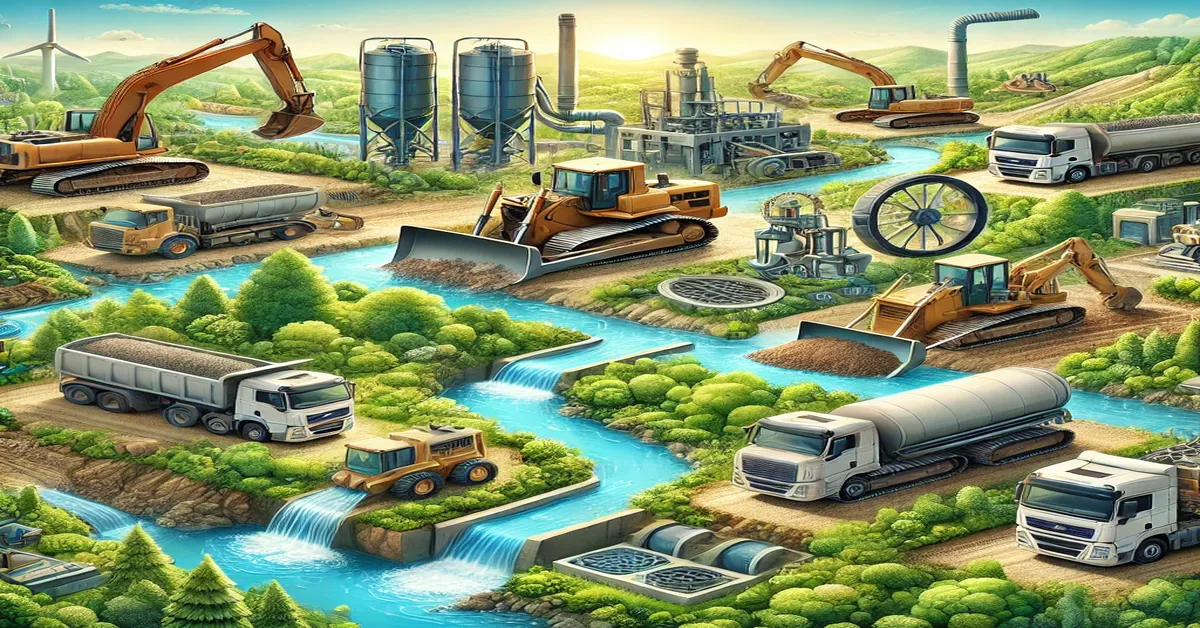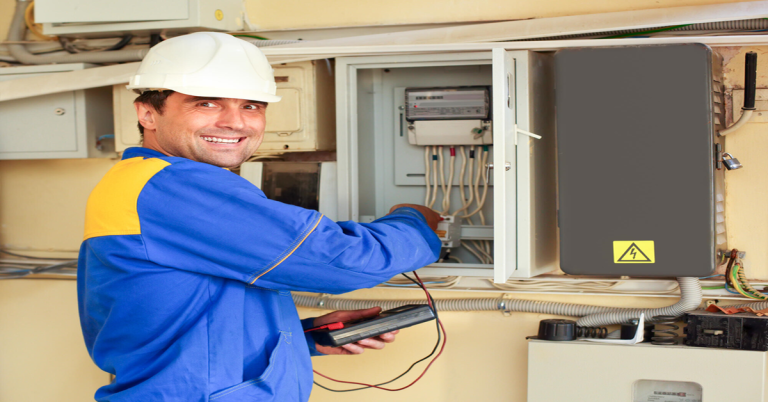Reclaimation Equipment: Transforming Industries with Sustainable Recovery Solutions

In today’s rapidly evolving industrial landscape, reclamation equipment has emerged as a crucial component for environmental sustainability, cost efficiency, and resource management. From mining to waste management, these innovative machines and devices enable industries to recover valuable materials, restore degraded land, and reduce waste, fostering a more sustainable future. This comprehensive guide explores the various types, features, benefits, challenges, and future trends of reclamation equipment, offering insights into how this technology is shaping multiple sectors around the globe.
Understanding Reclamation Equipment
What is Reclamation Equipment?
Reclamation equipment encompasses a wide array of devices and machinery designed to recover, process, and restore materials or land. Their primary goal is to facilitate environmental sustainability by reducing waste, reclaiming resources, and rehabilitating affected ecosystems. These machines are vital for industries looking to minimize environmental impact while optimizing operational costs. Whether recovering metals from scrap, restoring contaminated soil, or recycling waste materials, reclamation equipment plays an essential role in modern industrial operations.
Key Industries Utilizing Reclamation Equipment
- Mining and Mineral Processing: Extracting and recovering minerals efficiently while minimizing land disturbance.
- Oil and Gas Industry: Reclaiming drilling fluids, managing waste streams, and restoring sites post-extraction.
- Construction and Civil Engineering: Land clearance, site leveling, and soil stabilization for infrastructure projects.
- Waste Management and Recycling: Processing recyclables, reducing landfill waste, and recovering materials like plastics, metals, and organics.
- Agriculture: Reclaiming soil fertility and managing organic waste through composting machinery.
Types of Reclamation Equipment
Material Recovery Equipment
This category focuses on recycling and processing materials such as metals, concrete, asphalt, and minerals.
Scrap Metal Reclaimers
These machines sort, process, and separate ferrous and non-ferrous metals, facilitating recycling in industries such as scrapping, manufacturing, and construction. They utilize advanced sorting technologies, including magnetic separators, to efficiently recover metals from mixed waste streams.
Concrete and Asphalt Reclaimers
Used extensively in demolition and paving industries, these reclaimers crush old concrete and asphalt, turning them into recycled aggregates for new construction projects. This process significantly reduces material costs and environmental impact.
Mineral and Ore Reclaimers
Applying separation techniques such as flotation or dense media separation, these reclamation systems recover valuable minerals from ore processing waste, enhancing resource efficiency and profitability.
Land and Soil Reclamation Equipment
Designed to restore degraded land and soil quality, these machines are vital in environmental remediation efforts.
Bulldozers and Graders
These are used for site leveling, land clearing, and preparing areas for construction or planting. They help in shaping the terrain and removing debris or contaminated soil.
Hydroseeding and Soil Stabilization Machines
Employing techniques like hydroseeding, these machines promote rapid vegetation growth and prevent erosion, restoring the land’s natural stability.
Decontamination Equipment
Specialized in removing pollutants from contaminated sites, these systems utilize thermal, chemical, or biological methods to clean affected areas effectively.
Water and Waste Reclamation Equipment
This equipment manages water resources and waste streams to promote recycling and environmental protection.
Sediment Removal Systems
Primarily used in dredging operations, these systems remove sediments from waterways, maintaining navigability and preventing ecological damage.
Water Treatment Modules
Featuring filtration, chemical treatment, and recycling capabilities, these modules purify water for reuse in industrial applications, reducing freshwater consumption.
Industrial Waste Reclaimers
Recover valuable components from waste streams, such as metals or organic materials, enabling their reuse or safe disposal.
Recycling Equipment
This category enhances the recycling of plastics, organics, glass, and wood, reducing landfill reliance.
Plastic and Rubber Reclaimers
Shredders and pelletizers process plastic waste into reprocessable granules, supporting circular economy initiatives.
Wood and Organic Material Reclaimers
Grinding and composting machinery transform wood waste and organic materials into mulch or fertilizer, promoting sustainable resource use.
Glass Reclaimers
Crushing and sorting systems enable glass recycling, reducing raw material consumption and energy use in manufacturing.
Key Features and Technologies in Reclamation Equipment
Automation and Control Systems
Modern reclamation equipment integrates smart controls and automation to increase precision, efficiency, and safety. These allow operators to monitor operations remotely and optimize performance using IoT-enabled sensors.
Crushing and Grinding Mechanisms
Enhanced crushing technology minimizes material size, improving the recovery rate of valuable components like minerals and metals.
Separation Technologies
- Magnets: For ferrous material separation.
- Flotation: For mineral recovery.
- Dense media separation: For mineral beneficiation.
Environmental Controls
Dust suppression systems, noise barriers, and emission controls help machinery operate sustainably, reducing environmental footprint and complying with regulations (EPA standards).
Benefits of Using Reclamation Equipment
Environmental Sustainability
Reclamation equipment minimizes waste and restores ecosystems, supporting global environmental goals. Industries reduce the need for new raw material extraction, thus conserving natural resources.
Cost Efficiency and Resource Conservation
Recovering materials reduces procurement costs and dependency on virgin resources. Over time, investments in reclamation technology yield significant savings.
Regulatory Compliance
Many jurisdictions mandate waste reduction and land reclamation. Using reclamation equipment helps industries meet environmental standards and avoid penalties.
Enhanced Project Turnaround Times
Efficient reclamation processes accelerate project timelines, especially in construction, mining, and infrastructure development.
Reduction of Landfill Waste
By recycling and recovering materials, industries contribute to waste reduction efforts, lessening the burden on landfills and ecosystems.
Challenges and Considerations
Initial Capital Investment
High-quality reclamation machinery can require substantial upfront capital. However, long-term savings and environmental benefits often justify the expense.
Equipment Maintenance and Operational Expertise
Proper operation and regular maintenance are essential to ensure efficiency and longevity. Training personnel is a critical consideration.
Material Variability and Processing Complexity
Diverse material characteristics pose challenges for standard equipment, necessitating customization or adaptable technology.
Site-Specific Customization Needs
Each project site has unique requirements that may influence equipment selection and setup.
Selecting the Right Reclamation Equipment
Assessing Project Requirements and Goals
Define clear objectives — whether material recovery, land restoration, or water recycling — to choose suitable machinery.
Evaluating Equipment Capacity and Efficiency
Match equipment specifications with project scale to ensure effective resource utilization.
Considering Environmental Impact
Select eco-friendly options that reduce emissions, dust, and noise, aligning with sustainability goals.
Partnering with Reputable Manufacturers and Suppliers
Reliable vendors ensure quality, after-sales support, and technological innovation. Check references and industry certifications.
Future Trends in Reclamation Equipment
Integration of IoT and Smart Sensors
Enhancing operational monitoring and predictive maintenance, smart sensors improve efficiency and reduce downtime.
Automation and Robotics Advancements
Robotics enable remote operation and precise handling of complex materials, reducing labor costs and improving safety.
Eco-friendly and Sustainable Machinery Development
Emerging designs focus on less energy consumption, lower emissions, and recyclability of the machines themselves.
Enhanced Mobility and Versatility of Equipment
Compact and multi-purpose reclamation machines allow for easier transport and adaptation across varied projects.
Case Studies and Real-World Applications
Successful Land Reclamation Projects
Various government and private initiatives have transformed contaminated or unused land into productive areas using land reclamation equipment.
Mining Operations Maximizing Resource Recovery
Miners deploy mineral reclaimers and processing plants to recover more minerals with less environmental disturbance, exemplified by companies like Rio Tinto.
Waste-to-Resource Conversion Initiatives
Recycling centers employing advanced reclaimers reduce landfilling and promote circular economy principles, exemplified by companies such as Waste Management Inc.
Innovative Uses in Construction and Infrastructure
Recycling old concrete and asphalt reduces costs and environmental impact of infrastructure projects in urban development.
Comprehensive Overview of Key Reclamation Equipment
| Equipment Type | Primary Function | Industries Used | Benefits |
|---|---|---|---|
| Scrap Metal Reclaimers | Metal sorting and processing | Recycling, manufacturing | Cost savings, resource recovery |
| Concrete & Asphalt Reclaimers | Crushing old pavement materials | Construction, demolition | Sustainability, cost reduction |
| Mineral & Ore Reclaimers | Mineral separation and recovery | Mining | Enhanced resource utilization |
| Land Reclamation Machinery | Land leveling & site restoration | Construction, environmental remediation | Land recovery, erosion control |
| Water Treatment Modules | Water purification and recycling | Industrial, municipal | Water conservation, pollution control |
Frequently Asked Questions (FAQs)
1. What is reclamation equipment, and why is it important?
Reclamation equipment refers to machinery used for recovering, recycling, and restoring materials or land. It is vital for reducing waste, conserving resources, and promoting environmental sustainability in various industries.
2. How does reclaimation equipment benefit industries economically?
It lowers raw material procurement costs, minimizes waste disposal expenses, and speeds up project timelines, delivering significant cost savings over time.
3. What are common challenges faced when implementing reclamation equipment?
High initial investment, maintenance needs, material variability, and site-specific customization are common hurdles, but they can be addressed with proper planning and technology choices.
4. Can reclamation equipment be customized for specific projects?
Yes, many equipment manufacturers offer tailored solutions to meet unique project needs, ensuring optimal performance and compliance with environmental standards.
5. What are the latest technological trends in reclamation equipment?
Integration of IoT sensors, automation, robotics, and eco-friendly designs are key trends that enhance efficiency and sustainability in reclamation processes.
6. How do I choose the right reclamation equipment for my project?
Assess your project goals, site conditions, material types, capacity requirements, and budget. Consulting with reputable suppliers can also provide valuable insights.
7. Are there environmental regulations that govern the use of reclamation equipment?
Absolutely. Many regions have strict standards for dust, noise, chemical use, and land restoration. Compliance ensures legal operation and sustainability.
8. How does reclamation equipment contribute to reducing landfill waste?
By recycling and recovering materials like plastics, metals, and organic waste, reclamation equipment diverts significant waste from landfills, supporting environmental health.
9. What industries are the biggest adopters of reclamation technology?
Mining, construction, waste management, and the oil and gas sectors are leading adopters due to their high environmental impact and material recovery needs.
10. Where can I find reputable providers of reclamation equipment?
Industry-leading manufacturers and suppliers can be found through associations like the Air & Waste Management Association or industry trade shows. Visiting company websites and requesting demos can also help.
Embracing reclamation equipment is essential for industries aiming to meet environmental standards, reduce costs, and adopt sustainable practices. As technology advances, the potential for these machines to revolutionize resource management continues to grow, making it a worthwhile investment for a more sustainable future.





